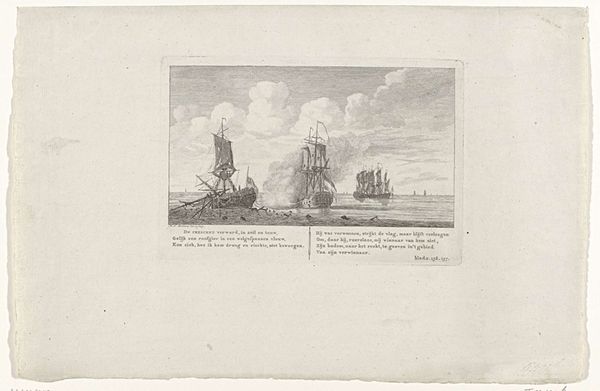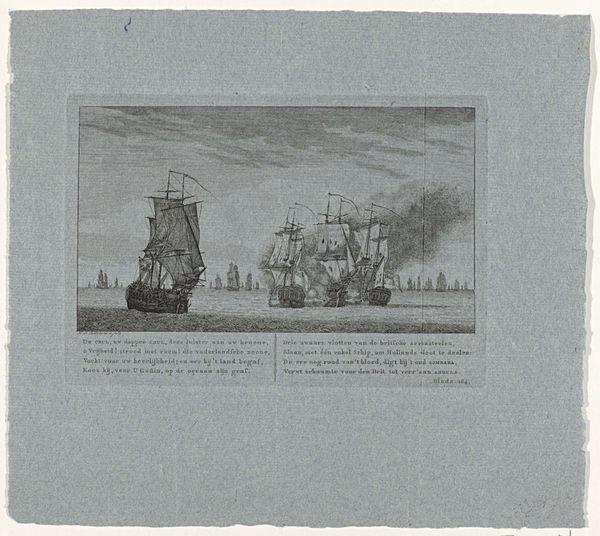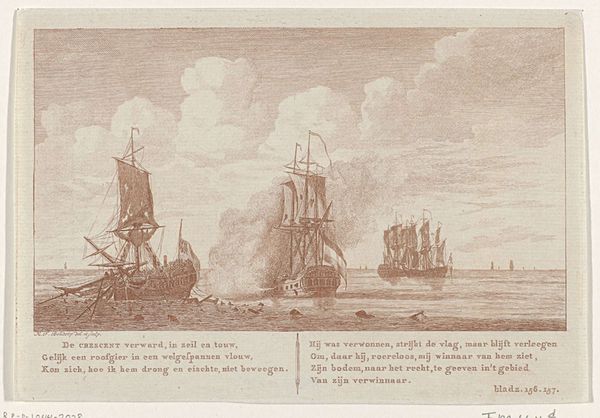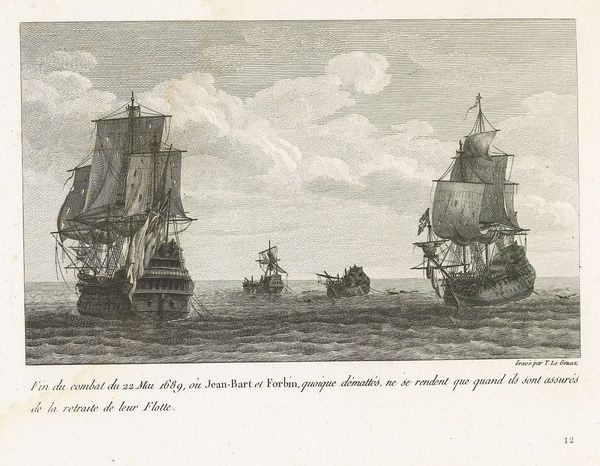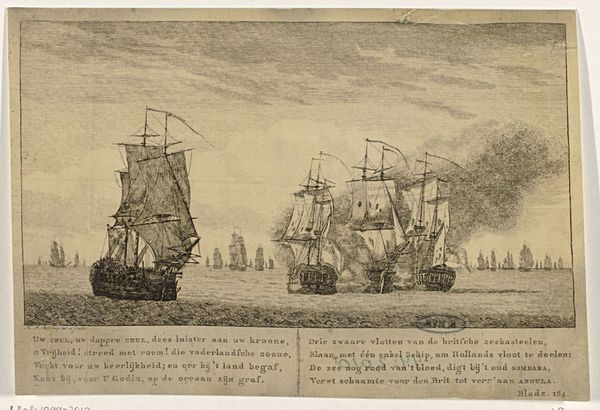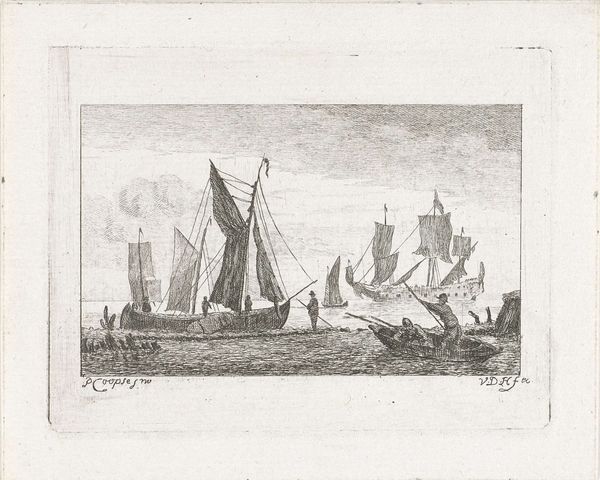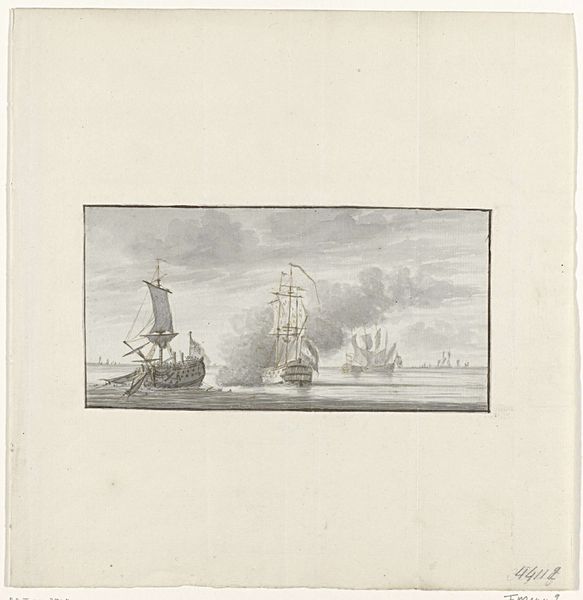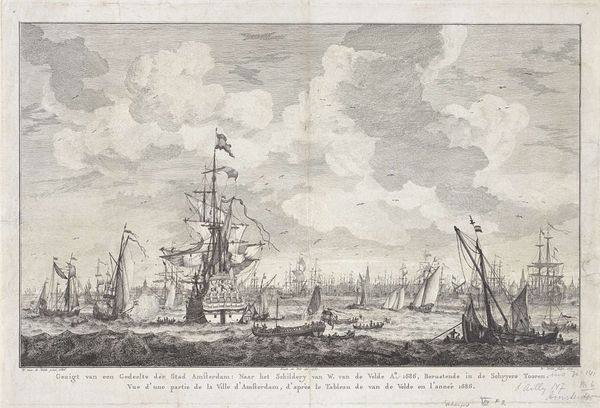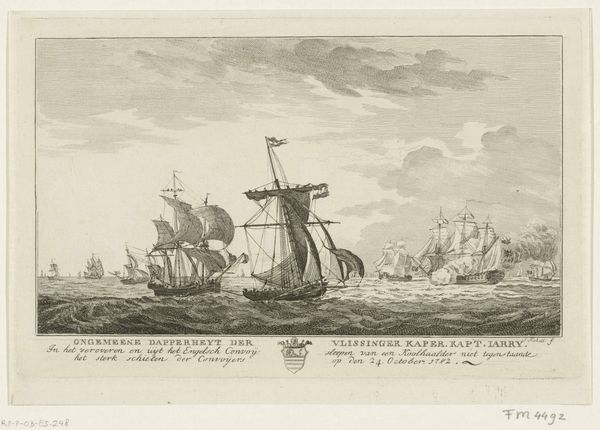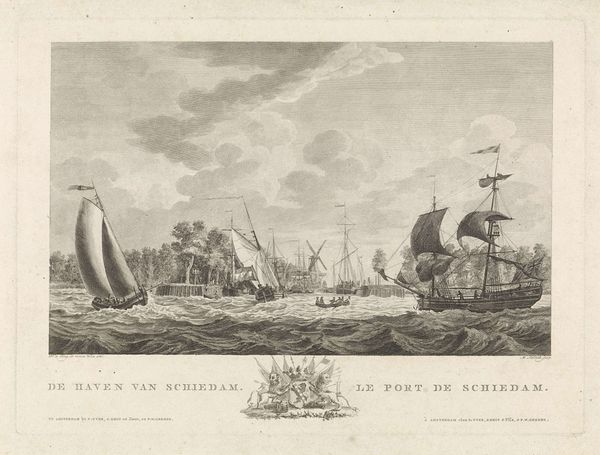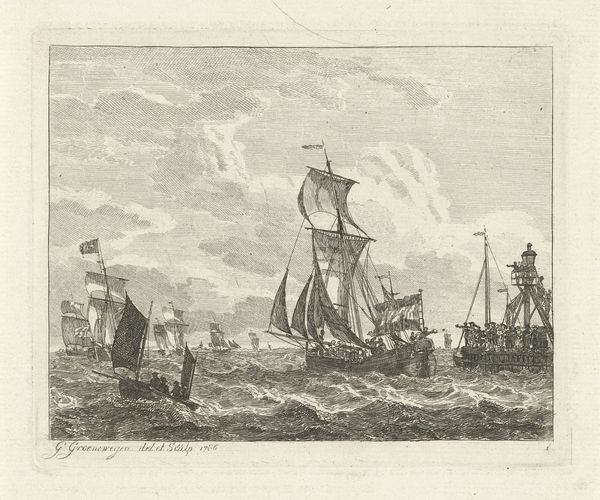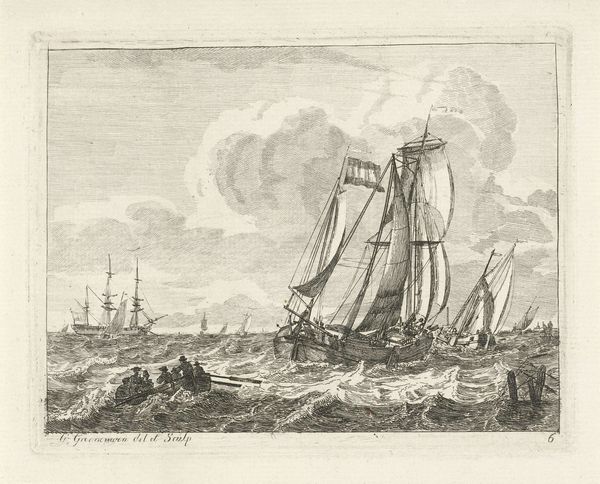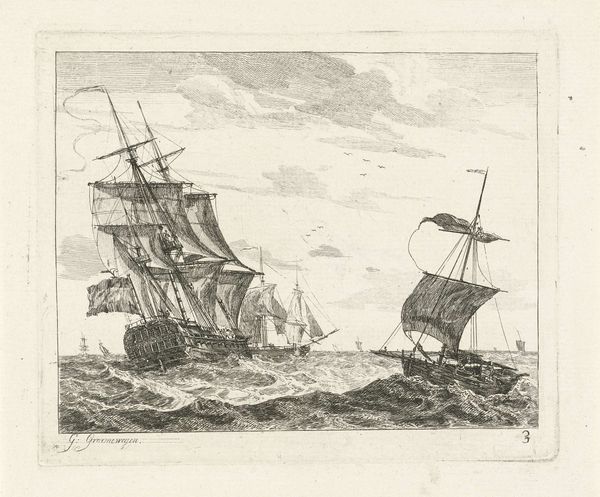
Dimensions: height 143 mm, width 207 mm
Copyright: Rijks Museum: Open Domain
Editor: Right, let's talk about "Zeeslag bij Cadiz, 1781," a print made between 1781 and 1782 by Carel Frederik Bendorp. Looking at it, I'm immediately struck by the chaos; it seems more symbolic than realistic. How would you interpret its place within the art of its time? Curator: It's important to understand that depictions of naval battles like this one were often heavily politicized. Beyond the visual spectacle, prints such as this served a crucial role in shaping public opinion and bolstering national pride. Ask yourself, who was the intended audience and what message was Bendorp trying to convey? Editor: So, it’s less about accurate documentation and more about…propaganda, perhaps? Highlighting Dutch naval power and victories? Curator: Precisely. Consider also how this print might be displayed and circulated. These images played a part in constructing a national narrative. It would have been sold as a commodity and displayed in homes to be interpreted by the public. To what extent might prints like these reinforce social hierarchies, by celebrating victories of the powerful? Editor: That's a great point; the victors get to write the histories, or in this case, create the images. So, even seemingly straightforward historical art can be deeply embedded in social and political contexts. Curator: Absolutely. Understanding the forces that shape the production and reception of art is essential. Prints played a vital role in visualizing power and reinforcing national identity in the late 18th century. Editor: This has definitely made me reconsider how I approach historical artwork. It's not enough to just appreciate the aesthetic; we need to think about the motivations behind its creation and its role in society. Curator: Indeed, context is key to unlock deeper understanding.
Comments
No comments
Be the first to comment and join the conversation on the ultimate creative platform.
